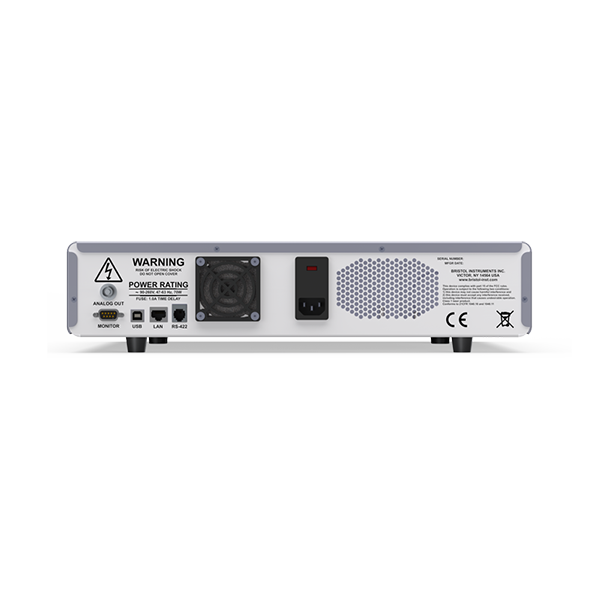Fast wavelength measurement reduces testing times
828 Series Optical Wavelength Meter
- Fastest measurement rate of 1 kHz
- Wavelength accuracy as high as ± 0.3 pm
- Automatic calibration with a built-in wavelength standard
- Measurement confidence level of ≥ 99.7%
- Traceable to NIST standards
- Power measured to an accuracy of ± 0.5 dB
- Convenient touch-screen display reports measurement data in a variety of formats
- Interfacing via SCPI using USB, Ethernet, or GPIB
- Data streaming available using RS-422 serial interface
- Internal data storage for up to one million measurements
- Rugged design for manufacturing environments
- Five-year warranty covers all parts and labour
The fastest wavelength measurement for optical transceiver testing
The 828 Series Optical Wavelength Meter from Bristol Instruments is designed to revolutionise the production of tunable transmitter lasers used in WDM applications.
A Fizeau etalon design is used to generate a spatial interferogram that is detected by a fast InGaAs photodetector array. An on-board digital signal processor quickly converts the interferometric data to wavelength. Because this calculation is done within the instrument, a sustained measurement rate of 1 kHz is achieved.
This speed enables greater efficiency in the production of WDM transceivers by dramatically reducing the time needed for wavelength testing.
Accurate wavelength measurement is guaranteed
Automatic calibration with a built-in wavelength standard maintains the performance of the 828 Optical Wavelength Meter over long periods of time. What’s more, every 828 system is rigorously tested with laser sources that are traceable to NIST standards.
Designed for convenience, built to last
Operation of the 828 Optical Wavelength Meter is straightforward.
The optical signal enters the model 828 through an FC (UPC or APC) fibre optic connector on the front panel. The system’s high sensitivity results in an input power requirement as low as -40 dBm (0.1 µW). Automatic attenuation instantly adjusts the signal for optimum performance.
A convenient touch-screen display on the instrument’s front panel controls the 828 system and reports the measured wavelength and power. The measurement data can also be sent to a PC using a variety of interface options that satisfy virtually any test application.
An RS-422 serial interface is available for data streaming that can be triggered by the instrument itself or with a user-supplied signal. As many as one million measurements can be stored to an internal data buffer for analysis at a later time. Or, interfacing can be done via a library of SCPI commands using a standard USB or Ethernet interface, or an optional GPIB interface.
The rugged design of the 828 Optical Wavelength Meter provides long-term reliable operation that is backed by a five-year warranty covering all parts and labour.





































